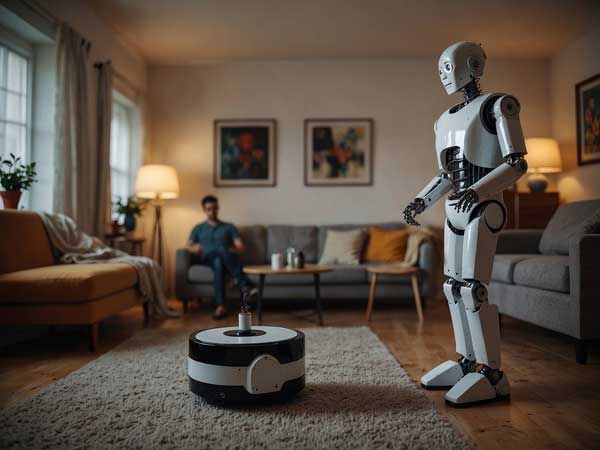At CES keynote speech Nvidia ceo calls robots multi-trillion dollar opportunity

[A household robot. Credit to Pixabay]
At the annual Consumer Electronics Show (CES) in Las Vegas, the CEO of Nvidia, Jensen Huang, announced that the company is on the brink of revolutionizing robotics through artificial intelligence, forecasting a multi-trillion dollar opportunity.
Huang unveiled several new products and collaborations in the "physical AI" field, outlining his ambitious plans for the company's incredible expansion. Highlights included AI models for humanoid robots and a significant agreement with Toyota to utilize Nvidia's self-driving vehicle technology.
The demand for its AI processors has propelled Nvidia above a $3 trillion market capitalization, solidifying its position as one of the most valuable firms globally.
More than 30 years after establishing Nvidia as a firm that makes graphics chips for video games, Huang has gone on to become a household brand in the tech industry.
Long before his keynote speech began, massive crowds formed outside the Mandalay Bay convention center, with some people still waiting when Huang took stage donning a glittering version of his signature leather jacket.
Nvidia has broadened the use cases for AI based on its processors by developing software that enables businesses to train and deploy robots, ranging from self-driving vehicles and humanoids to those used in smart factories and warehouses.
Huang emphasized that overcoming the technological barriers to large-scale robot deployment would open the door to the biggest technology sector in history.
As AI sped up and improved the process of modeling the real world and producing the massive volumes of data required to train robots, Nvidia stated that the field of robotics had reached a technical tipping point.
Nvidia estimates that the market for humanoid robots alone could grow to $38 billion over the next 2 decades.
On its new Cosmos platform, Nvidia introduced a suite of foundational AI models that developers can use for free to create their own models and generate data.
Currently, a modest portion of the company's total income comes from robots and its emerging “physical AI” platform.
This new AI sector brought in $486 million for Nvidia's quarter ending in October, while robotics and automotive brought in $449 million.
This is a small portion of total sales, since over the same time period, the business made $30.8 billion from the sale of processors for data centers that run AI models.
Nvidia projects its automotive division will grow to $6 billion by the fiscal year 2026.
Huang told the CES crowd that autonomous cars will be the first multi-trillion dollar robotics industry.
Nvidia is seeking new markets as a result of mounting pressure from its largest clients, Microsoft and Amazon, which are racing to develop their own proprietary AI data center processors.
Nvidia's choice to focus more on "physical AI" was the next natural move, according to market observers.
Making the items dependable, affordable, and widely available enough to generate viable business models would be the primary challenge.
Nvidia also revealed new tools for building and testing fleets of manufacturing and warehouse robots and training autonomous cars at CES, along with a set of foundation models for humanoid robots known as the "GR00T Blueprint," which the company claimed would accelerate robot development.

- Stella Kim / Grade 10
- Big Heart Christian School

![THE HERALD STUDENT REPORTERS [US]](/assets/images/logo_student_us.png)
![THE HERALD STUDENT REPORTERS [Canada]](/assets/images/logo_student_ca.png)
